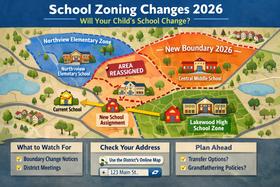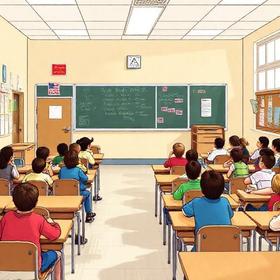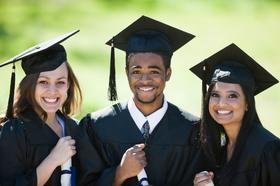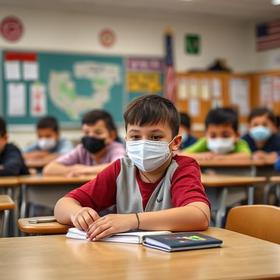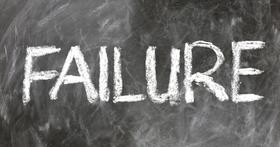Gay Friendly Public Schools: Will New Program Ideas Decrease Violence and Tension?
According to National Public Radio’s (NPR) review of the new public school initiative to create gay-friendly public schools, the city of Chicago is instilling plans for “a new school where gay students and others wouldn't face the bullying and harassment they endure in other schools.”
As Chicago has surfaced as the focal point of this controversy, acting as one of the first cities in the country to widely support this public program shift, school and community leaders are caught in the middle of a national and heated debate.
The Background: Why Create Gay-Friendly Schools?
While Chicago is currently earning the most attention for its plan to create a gay-friendly school, cities across the country have implemented these programs in the past. Specifically, New York made the gay-friendly Harvey Milk School, while Milwaukee created the Alliance High School; both of these programs have been reported as inspirations for the up-and-coming Chicago school, which is intended to open in 2010.
As the CNN report, “Chicago May Get Gay-Friendly High School,” reveals, school and community officials in Chicago created the proposal for a gay-friendly high school so that students of all sexual preferences and identities could attend school without feeling harassed or in danger. William Greaves, Chicago’s liaison to the gay and lesbian community, is one of the advocates for the new school and is also a contributor to the school’s proposed design. According to CNN, he suggested the “Social Justice High School-Pride Campus,” where approximately 600 students could attend school for college-prep courses.
As Greaves describes: “‘We as a team saw many … lesbian, gay, bisexual, transgender, questioning [students] and their allies who were well integrated into the system and doing well academically,’ Greaves said, ‘but we saw just as many, if not more, who were isolated struggling, who were dropping out.’” As Greaves continues, he asserts that all students should feel safe, regardless of sexual orientation.
In examining the creation of the preceding schools, such as New York’s Harvey Milk School (HMS), The New York Times reports that this school was initially created to allow students to “come to the school as runaways seeking help from its umbrella organization, the Hetrick-Martin Institute, a social-services agency that for 25 years has been ministering to ‘at risk’ gay teens.” Created in 1985, HMI became a place where displaced students and youths could come and safely earn their GED degree, as classes were taught by an instructor hired and approved by New York’s Board of Education. This small program from the ‘80s, however, gained significant popularity as “over the next fifteen years, enrollment grew from 17 to 40 students—until Harold Levy, school chancellor under Mayor Rudy Giuliani, set the wheels in motion in 2001 for the expansion of Harvey Milk into an accredited, four-year, diploma-granting high school.”
Essentially, both the Chicago and New York schools, along with the various gay-friendly school programs across the country, have created these organizations so that all students have access to a safe, well-rounded, and protected education.
The Debate Over Gay-Friendly Schools
The Pros
As NPR reveals, the concept of gay-friendly schools has created a significant controversy among local and national communities: “Some in the community support the idea. But others question whether tax dollars should fund it or whether such a school should exist at all.”
While gay-friendly school initiatives are controversial, the schools are ultimately intended to help target a rising population group whose needs are not being met by the traditional public school settings. Many gay, lesbian, and transgender students are failing to find safe and fruitful learning opportunities in their current school settings; to alleviate this problem and support all student groups, various school officials support programs that can offer added protection and assistance.
As NPR reveals, “At a recent public forum hosted by Chicago's Office of New Schools, most in the audience supported the proposed school. Some had questions about where it would be located, its curriculum and even how students would decide which restrooms to use.”
The Cons
Despite Chicago’s general acceptance, many parents, school leaders, and students are opposed to gay-friendly school programs. As one parent from NPR’s report asserts, “‘it’s not to take away my compassion for anybody here. I try to raise my children righteously via the word of God via the Bible because this is my belief […] I cannot support with my own tax dollars paying for something that I don't agree with.’”
This video gives an overview of the subject in the U.K.
Community members’ religious beliefs are a common catalyst for disagreement in the cases of gay-friendly schools, as homosexuality goes against many of the doctrines of commonly practiced faiths. Many community members struggle to support, with their own tax money, programs that go directly against their moral and religious convictions.
Adding to this, “Others had different reasons for opposing the school,” as one transgender student argued that creating gay-friendly schools is a reintroduction of segregation, as this student paralleled the gay-friendly schools to initiatives similar to the Brown vs. Board of Education initiative. As this student asserts, “‘Have any of you considered that this is nothing but de facto segregation? I support you in principle. School should be safe for everyone. But I'm not sure segregation is the way forward.’”
Questions? Contact us on Facebook and Instagram. @apublicschoolreview
#LGBTQInclusion #SafeSchools #AntiBullying #DiversityEducation #SchoolClimate #publicschools



